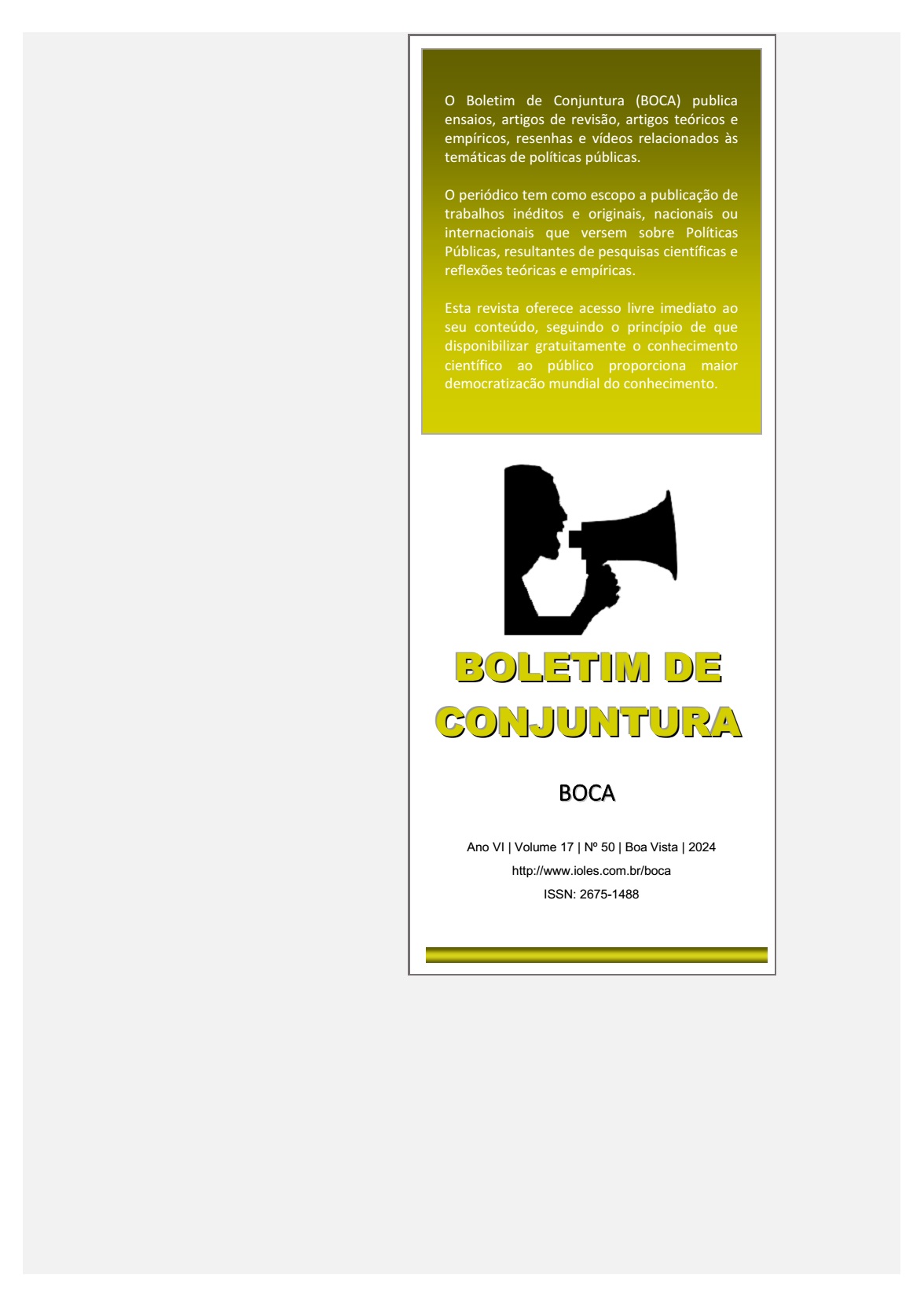A COMPUTATIONAL MODEL FOR ANALYSIS OF PRINTER REMANUFACTURING SCENARIOS
Main Article Content
Abstract
The growing concern about sustainability and efficient resource management has driven studies on the circular economy and the remanufacturing of electronic devices, such as printers, in higher education institutions. Remanufacturing is seen as a promising strategy to reduce electronic waste and the costs associated with purchasing and maintaining equipment. This study aims to analyze the economic and environmental impacts of printer remanufacturing in a higher education institution, using computational modeling as an analysis tool. The research adopted the System Dynamics methodology, following four main steps: problem specification, construction of formal models, computational implementation and solution verification. Computational modeling was carried out with the Vensim software, allowing the simulation of different printer remanufacturing scenarios and the assessment of their economic and environmental impacts. The model was divided into three submodels: number of printers, number of toners and refills, and economic and environmental impacts. The study identified that the remanufacturing of printers can result in a significant reduction in costs and the volume of electronic waste generated. Specifically, a cost reduction of around 37% and a 2.5-fold decrease in the volume of electronic waste was observed when compared to the scenario without remanufacturing. Furthermore, the scenario that involved replacing printers with rented models had the lowest volume of toner disposal, indicating an effective strategy to minimize waste generated. Therefore, printer remanufacturing emerges as a viable and sustainable strategy for higher education institutions, offering significant economic and environmental benefits.
Article Details

This work is licensed under a Creative Commons Attribution 4.0 International License.
Copyright (c). Conjuncture Bulletin (BOCA)
This work is licensed under a Creative Commons Attribution 4.0 International License.
References
ABELIOTIS, K. et al. “Decision support systems in solid waste management: a case study at the national and local level in Greece”. Global NEST Journal, vol. 11, n. 2, 2009.
ALKOUH, A.; KEDDAR, K. A.; ALATEFI, S. “Remanufacturing of Industrial Electronics: A Case Study from the GCC”. Electronics, vol. 12, n. 9, 2023.
ANDRADE, A. L. Pensamento sistêmico: caderno de campo. Porto Alegre: Editora Bookman, 2006.
AZEVEDO, J. L. “A Economia Circular Aplicada no Brasil: uma análise a partir dos instrumentos legais existentes para a logística reversa”. XI Congresso Nacional de Excelência em Gestão. Rio de Janeiro: FIRJAN, 2015.
BOUSQUIN, J. et al. “Life cycle assessment in the print industry: A Critical Review”. Journal of Industrial Ecology, vol. 16, 2012.
BOUSQUIN, J.; ESTERMAN, M.; ROTHENBERG, S. “Life cycle analysis in the printing industry: A review”. NIP and Digital Fabrication Conference, vol. 27, 2011.
CHARTER, M.; GRAY, C. “Remanufacturing and product design”. International Journal of Product Development, vol. 6, n. 3, 2008.
CHWIF, L.; MEDINA, A. C. Modelagem e Simulação de eventos discretos: teoria e aplicação. Rio de Janeiro: Editora Elsevier, 2015.
COSTI, P. et al. “An environmentally sustainable decision model for urban solid waste management”. Waste Management, vol. 24, n. 3, 2004.
DYSON, B.; CHANG, N. “Forecasting municipal solid waste generation in a fast-growing urban region with system dynamics modeling”. Waste management, vol. 25, n. 7, 2005.
EMF - Ellen Macarthur Foundation. “Towards the circular economy: Economic and business rationale for an accelerated transition”. Ellen Macarthur Foundation [2013]. Disponível em: . Acesso em: 23/12/2023.
FERREIRA, J. M. B.; FERREIRA, A. C. “A sociedade da informação e o desafio da sucata eletrônica”. Revista de Ciências Exatas e Tecnologia, vol. 3, n. 3, 2008.
FORD, A. Modeling the environment. Washington: Island Press, 2006.
GOLDBARG, M. C.; LUNA, H. P. L. Otimização combinatória e programação linear: modelos e algoritmos. Rio de Janeiro: Editora Campus, 2005.
HATCHER, G. D. et al. “Design for remanufacturing in China: a case study of electrical and electronic equipment”. Journal of Remanufacturing, vol. 3, 2013.
HILLIER, F. S.; LIEBERMAN, G. J. Introdução à pesquisa operacional. São Paulo: Editora McGraw Hill Brasil, 2013.
JIANG, X. et al. “An energy-efficient method of laser remanufacturing process”. Sustainable Energy Technologies and Assessments, vol. 52, 2022.
KUM, V.; SHARP, A.; HARNPORNCHAI, N. “A system dynamics study of solid waste recovery policies in Phnom Penh City”. Proceedings The 23rd International Conference of the System Dynamics Society. Boston: SDS, 2005.
LAW, A. M. Simulation Modeling and Analysis. Nova York: McGraw-Hill, 2015.
LEITÃO, A. “Economia circular: uma nova filosofia de gestão para o séc. XXI”. Portuguese Journal of Finance, Management and Accounting, vol. 1, n. 2, 2015.
MATSUMOTO, M. et al. “Trends and research challenges in remanufacturing”. International Journal of Precision Engineering and Manufacturing-Green Technology, vol. 3, 2016.
RAUTELA, R. et al. “E-waste management and its effects on the environment and human health”. Science of the Total Environment, vol. 773, 2021.
SHITTU, O. S.; WILLIAMS, I. D.; SHAW, P. J. “Global E-waste management: Can WEEE make a difference? A review of e-waste trends, legislation, contemporary issues and future challenges”. Waste Management, vol. 120, 2021.
SIMONETTO, E. O. “Simulation computer to evaluate scenarios of solid waste–an approach using systems dynamics”. International Journal of Environment and Sustainable Development, vol. 13, n. 4, 2014.
STOBBE, L. et al. “EuP Preparatory Studies ‘Imaging Equipment’ (Lot 4)”. Task, vol. 1, 2007.
SUFIAN, M. A.; BALA, B. K. “Modeling of urban solid waste management system: The case of Dhaka city”. Waste Management, vol. 27, n. 7, 2007.
TIOSSI, F. M.; SIMON, A. T. “Economia Circular: suas contribuições para o desenvolvimento da Sustentabilidade”. Brazilian Journal of Development, vol. 7, n. 2, 2021.
VENTANA SYSTEMS. “Vensim. Versão 6.3”. Ventana Systems [2016]. Disponível em: . Acesso em: 10/07/2023.


